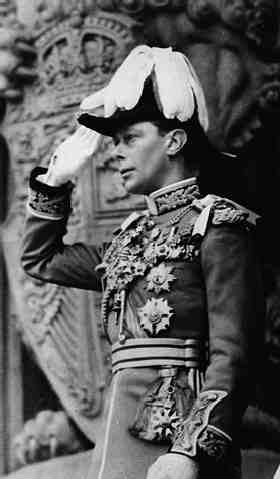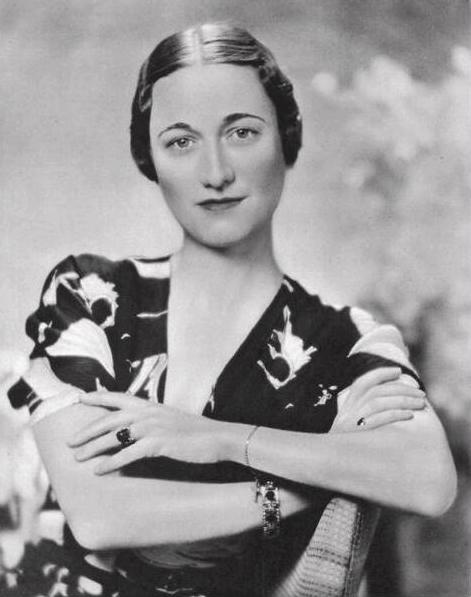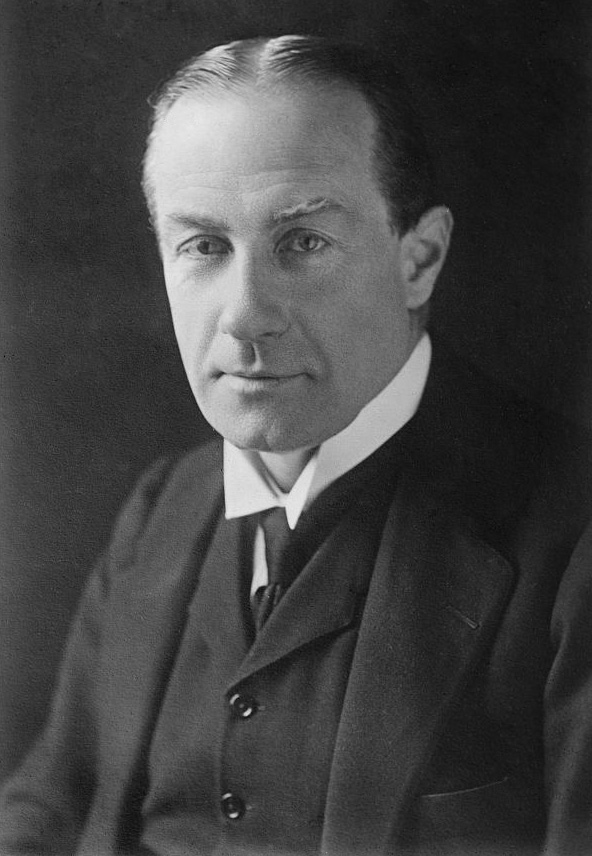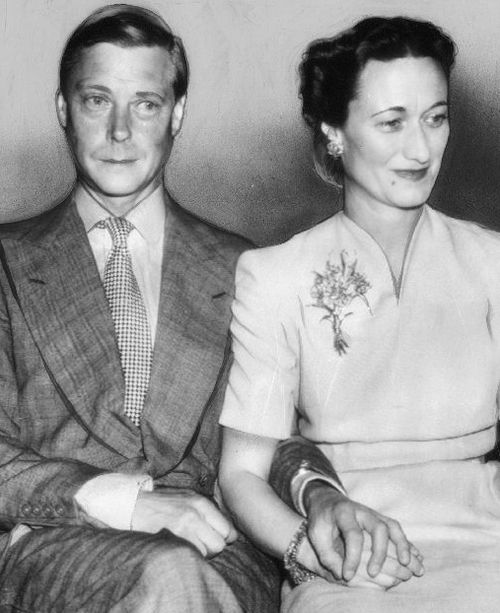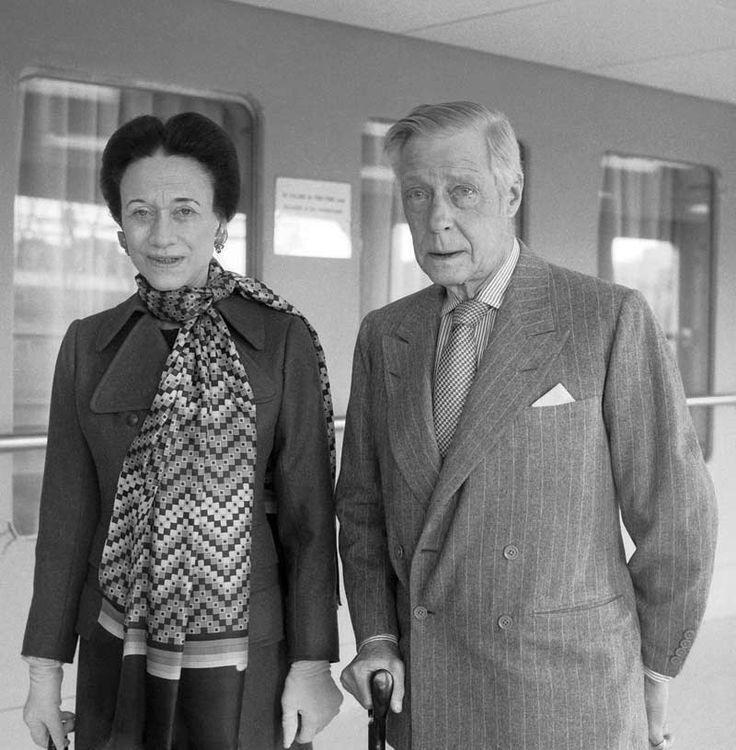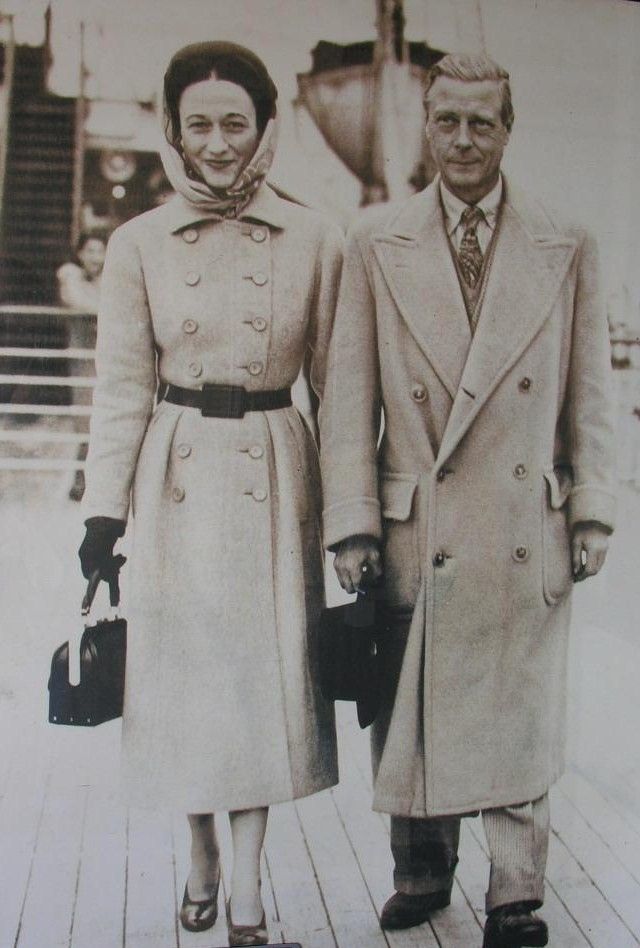Crisis por la abdicación de Eduardo VIII
Se denomina crisis por la abdicación a una serie de conflictos políticos y legales que ocurrieron en el Imperio británico en 1936, causados por el propósito del rey Eduardo VIII de casarse con Wallis Simpson, una celebridad social estadounidense que se divorció de su primer marido y estaba en vías de divorciarse por segunda ocasión.
Los gobiernos del Reino Unido y de los dominios de la Mancomunidad Británica de Naciones manifestaron su oposición al matrimonio. Se plantearon objeciones religiosas, legales, políticas y morales. Comomonarca británico, Eduardo era el jefe nominal de laIglesia de Inglaterra, que no permitía que las personas divorciadas se volvieran a casar mientras el cónyuge anterior estuviera vivo; por lo que la opinión más extendida era que el rey no podía casarse con Wallis Simpson y al mismo tiempo permanecer en el trono. La señora Simpson era considerada como una consorte política y socialmente inadecuada debido a sus dos matrimonios fallidos. La presunción generalizada entre elestablishment era que la guiaba su interés en el dinero o la posición y no el amor por el rey. A pesar de la oposición, Eduardo declaró que amaba a la señora Simpson y pretendía casarse con ella tanto si los gobiernos aprobaban el enlace como si no.
La resistencia general para aceptar a Wallis Simpson como consorte del rey y la negativa de Eduardo a abandonarla condujeron a su abdicación en diciembre de 1936.n. 1 Es el único monarca británico que ha renunciado voluntariamente al trono desde el periodo anglosajón. Le sucedió su hermano Alberto, quien tomó el nombre de Jorge VI. Tras su abdicación, Eduardo recibió el título de duque de Windsor con el tratamiento de Su Alteza Real y se casó con la señora Simpson al año siguiente. Permanecieron casados hasta la muerte de Eduardo, 35 años más tarde.
Eduardo y Wallis Simpson
Jorge V del Reino Unido murió el 20 de enero de 1936 y su hijo mayor le sucedió comoEduardo VIII. Este último era soltero, pero durante los últimos años se hacía acompañar en los eventos sociales privados por Wallis Simpson, la esposa estadounidense de Ernest Aldrich Simpson, un ejecutivo de transporte marítimo. El señor Simpson era el segundo marido de Wallis; su primer matrimonio con Win Spencer, un piloto de la Marina de los Estados Unidos, había terminado en divorcio en 1927. Durante 1936, la señora Simpson asistió a muchos eventos oficiales como invitada del rey, pero aunque su nombre apareció regularmente en la circular de la corte, el nombre de su marido brilló por su ausencia.1 En el verano de ese año, Eduardo evitó la tradicional y prolongada estancia enBalmoral y optó en su lugar por pasar las vacaciones con Wallis Simpson en elMediterráneo oriental a bordo del yate de vapor Nahlin. La prensa americana y la europea cubrieron ampliamente el crucero, pero la prensa británica mantuvo un silencio autoimpuesto sobre el viaje. Sin embargo, los canadienses y los expatriados británicos, que tenían acceso a los reportajes extranjeros, se escandalizaron en gran medida por la cobertura.2
En octubre se rumoreó en los círculos de la alta sociedad británica y en el extranjero que el rey pretendía casarse con Wallis Simpson en cuanto ella estuviera libre.3 Para el final de ese mes, la crisis llegó a un punto álgido cuando la señora Simpson solicitó el divorcio y la prensa estadounidense anunció que el matrimonio era inminente.4 El 13 de noviembre, Eduardo recibió una misiva de Alec Hardinge, su secretario privado, que decía: «el silencio de la prensa británica sobre el tema de la amistad de Su Majestad con Simpson no va a mantenerse […] A juzgar por las cartas de los súbditos británicos que viven en el extranjero, donde la prensa ha sido explícita, el efecto será desastroso».5 Los ministros británicos sabían que Hardinge le había escrito al rey y es posible que lo ayudaran a redactar la carta.6
El 16 de noviembre, Eduardo invitó al primer ministro Stanley Baldwin al palacio de Buckingham y le informó que tenía la intención de casarse. En respuesta, Baldwin le contestó que el matrimonio no sería aceptado por el pueblo y le dijo: «[…] la reina se convierte en la reina del país. Por tanto, en la elección de una reina la voz del pueblo debe ser escuchada».7 Stanley Bruce, el alto comisionado australiano en Londres —que además había sido primer ministro de Australia—, compartía el punto de vista de Baldwin. Después de conocer a Hardinge, Bruce le escribió a Baldwin para expresarle su horror ante la idea de un matrimonio entre el rey y Wallis Simpson.8 El gobernador general de Canadá, lord Tweedsmuir, informó al palacio de Buckingham y a Baldwin que los canadienses sentían un profundo afecto por el rey, pero también que la opinión pública canadiense podría mostrarse indignada si Eduardo se casaba con una divorciada.9
La prensa británica guardó silencio sobre el tema hasta que Alfred Blunt, obispo de Bradford, dio un discurso a su conferencia diocesana el 1 de diciembre. Mencionó la necesidad que tiene el rey de la gracia divina y dijo: «Esperamos que tenga conciencia de su necesidad. Algunos de nosotros deseamos que dé signos más positivos de estar consciente».10 La prensa tomó el sermón como el primer comentario público de una persona destacada sobre la crisis y se convirtió en noticia de portada al día siguiente. No obstante, cuando le preguntaron más tarde sobre el asunto, el obispo afirmó que en el momento en que escribió el discurso no había oído de Wallis Simpson.11
El 3 de diciembre, por recomendación de los asesores personales de Eduardo, la señora Simpson salió de Gran Bretaña con destino al sur de Francia; el propósito del viaje era escapar de la intensa atención de la prensa. Ambos estaban destrozados por la separación. En medio de una llorosa despedida, el rey le dijo: «nunca podría dejarte».12
_________________________________……………………………============================
Edward VIII abdication crisis
In 1936, a constitutional crisis in the British Empire was caused by King-EmperorEdward VIII‘s proposal to marry Wallis Simpson, an American socialite who was divorced from her first husband and was pursuing a divorce of her second.
The marriage was opposed by the governments of the United Kingdom and theDominions of the British Commonwealth. Religious, legal, political and moral objections were raised. As monarch of the United Kingdom, Edward was the nominal head of the Church of England, which did not then allow divorced people to remarry if their ex-spouses were still alive, so it was widely believed that Edward could not marry Wallis Simpson and remain on the throne.[1] Simpson was perceived to be politically and socially unsuitable as a consort because of her two failed marriages. It was widely assumed by the Establishment that she was driven by love of money or position rather than love for the King. Despite the opposition, Edward declared that he loved Simpson and intended to marry her whether his governments approved or not.
The widespread unwillingness to accept Simpson as the King’s consort, and Edward’s refusal to give her up, led to his abdication in December 1936.[2] He remains the only British monarch to have voluntarily renounced the throne since the Anglo-Saxon period. He was succeeded by his brother Albert, who took the regnal name of George VI. Edward was given the title His Royal Highness the Duke of Windsor following his abdication, and he married Wallis Simpson the following year. They remained married until his death 35 years later.
Edward and Wallis Simpson
Edward VIII succeeded his father, George V, as King-Emperor of the British Empire on 20 January 1936. He was a bachelor, but for the previous few years he had often been accompanied at private social events by Wallis Simpson, the American wife of British shipping executive Ernest Aldrich Simpson. Ernest Simpson was Wallis’s second husband; her first marriage, to U.S. Navy pilot Win Spencer, had ended in divorce in 1927. During 1936, Wallis Simpson attended more official functions as the King’s guest and, despite her name appearing regularly in the Court Circular, the name of her husband was conspicuously absent.[3] In the summer of that year, the King eschewed the traditional prolonged stay at Balmoral, opting instead to holiday with Simpson in the eastern Mediterranean on board the steam yacht Nahlin. The cruise was widely covered in the American and continental European press, but the British press maintained a self-imposed silence on the King’s trip. Nevertheless, Canadians and expatriate Britons, who had access to the foreign reports, were largely scandalised by the coverage.[4]
By October, it was rumoured in high society and abroad that Edward intended to marry Simpson as soon as she was free to do so.[5] At the end of that month, the crisis came to a head when she filed for divorce and the American press announced that marriage between her and the King was imminent.[6] On 13 November, the King’s private secretary, Alec Hardinge, wrote to him, warning: “The silence in the British Press on the subject of Your Majesty’s friendship with Mrs Simpson is not going to be maintained … Judging by the letters from British subjects living in foreign countries where the Press has been outspoken, the effect will be calamitous.”[7] Senior British ministers knew that Hardinge had written to the King and may have helped him draft the letter.[8]
The following Monday, 16 November, the King invited British Prime Minister Stanley Baldwin to Buckingham Palace and informed him that he intended to marry Simpson. Baldwin informed the King that such a marriage would not be acceptable to the people, stating: “… the Queen becomes the Queen of the country. Therefore in the choice of a Queen the voice of the people must be heard.”[9] Baldwin’s view was shared by the Australian High Commissioner in London, Stanley Bruce, who was a former Australian prime minister. On the same day that Hardinge wrote to the King, Bruce met Hardinge and then wrote to Baldwin expressing horror at the idea of a marriage between the King and Simpson.[10] Governor General of Canada Lord Tweedsmuir told Buckingham Palace and Baldwin that Canadians held deep affection for the King, but also that Canadian public opinion would be outraged if Edward married a divorcee.[11]
Nevertheless, the British press remained quiet on the subject, until Alfred Blunt, Bishop of Bradford, gave a speech to his Diocesan Conference on 1 December. In it, he alluded to the King’s need of divine grace, saying: “We hope that he is aware of his need. Some of us wish that he gave more positive signs of his awareness.”[12] The press took this for the first public comment by a notable person on the crisis and it became front page news the following day. When asked about it later, however, the bishop claimed he had not heard of Mrs Simpson at the time he wrote the speech.[13]
Acting on the advice of Edward’s staff, Simpson left Britain for the south of France on 3 December in an attempt to escape intense press attention. Both she and the King were devastated by the separation. At a tearful farewell, the King told her, “I shall never give you up.”[14]
On 6 December, the sexual psychologist Bernard Armitage wrote confidentially to Baldwin about Edward’s relationship with Simpson. His diagnosis was that as a young man Edward had suffered from social and sexual inadequacy. He ended “The stage was set for disaster”.[15]
Fuente:

